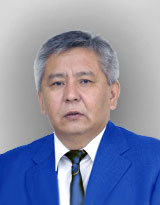Theories and concepts of gender inequality in the distribution of resources
https://doi.org/10.58732/2958-7212-2023-2-19-31
Abstract
The purpose of the study is an analytical review of the main theories and the concept of gender inequality in the distribution of resources.
Low-wage and short-term wage labour in the economy is often the only option for women (to a greater extent than for men), which leads to poverty in the population, especially in rural areas. The authors revealed that the consequences of Covid-19 and the ongoing geopolitical events, which had a negative impact on socio-economic development, also had a special impact. Thus, the problem of population poverty, especially in rural settlements, is relevant today both at the domestic and global levels. To achieve the goal, a review of the literature on the issues of the research issue, gender approaches in the decision-making process and an overview of the types and factors contributing to the unequal distribution of resources are used. As a result of the literature review, it was revealed that the causes of poverty in rural areas and labour migration are due to spatial inequality, which refers to inequality between urban and rural areas. In addition, there is a gender aspect of the problem between poverty and labour migration, i.e. women mostly accept low-paid work in the informal sector, which does not always mean an improvement in their situation. The reason for the poverty of women in rural areas is associated with their weaker position compared to men. The results of the study can be used to develop strategies and programs to improve the socio-economic situation of the population, especially women.
About the Authors
A. A. KireyevaKazakhstan
Anel A. Kireyeva, Сand. Sc. (Econ.), Associate Professor
Almaty
N. A. Abilkaiyr
Kazakhstan
Nazerke A. Abilkaiyr, PhD candidate
Almaty
G. K. Kenzhegulova
Kazakhstan
Gaukhar K. Kenzhegulova, PhD candidate
Almaty
References
1. Smith A. Research on the nature and causes of the wealth of nations. - Moscow: Sotsegiz, 1962 – 754 p.
2. Proudhon P. Zh. Poverty as an economic principle. - Moscow: Posrednik. - 1908. – 703 p.
3. Malthus T. R. Experience of the law on population. - Petrozavodsk: Petrocom, 1993. -136 p.
4. Beitz C. R. Does global inequality matter? // Metaphilosophy. – 2001. – Vol. 32. – №. 1‐2. – 95-112. doi: 10.1111/1467-9973.00177
5. O'neill M. What should egalitarians believe? //Philosophy & Public Affairs. – 2008. – Vol. 36. – №. 2. – 119-156. https://www.jstor.org/stable/40212816
6. Rawls J. A Theory of Justice. - Harvard University Press: Cambridge (MA). – 1971. – 560 p.
7. Deshingkar P., Farrington J. (ed.). Circular migration and multilocational livelihood strategies in rural India. – Oxford University Press: USA, 2009. – 320 p.
8. Srivastava R. Growing precarity, circular migration, and the lockdown in India // The Indian Journal of Labour Economics. – 2020. – Vol. 63. – 79-86. doi: 10.1007/s41027-020-00260-3
9. Mazzotta F., Papaccio A., Parisi L. Household management systems and women’s decision making within the family in Europe // Feminist Economics. – 2019. – Vol. 25. – №. 4. – P. 126-158. doi: 10.1080/13545701.2019.1658887
10. Bárcena-Martín E., Blázquez M., Moro-Egido A. I. The role of income pooling and decision-making responsibilities in material deprivation // Economic Modelling. – 2020. – Vol. 87. – P. 416-428. doi: 10.1016/j.econmod.2019.08.019
11. Sen A. Inequality reexamined. – Harvard University Press, 1995 - 228 p.
12. Piketty T., Saez E. Income inequality in the United States, 1913–1998 // The Quarterly journal of economics. – 2003. – Vol. 118. – №. 1. – P. 1-41. doi: 10.1162/00335530360535135
13. Kuznets S. Economic growth and income inequality // The American economic review. – 1955. – Vol. 45. – №. 1. – P. 1-28. https://www.jstor.org/stable/1811581
14. Hirschman, A. The Strategy of Economic Development. New Haven, Conn.: Yale University Press, 1958. – №. HD82 H49.
15. Becker G. S. Human Capita: a theoretical and empirical analysis. New York, 1964. – 416 p.
16. Kamaruddin R., Samsudin S. The sustainable livelihoods index: A tool to assess the ability and preparedness of the rural poor in receiving entrepreneurial project // Journal of Social Economics Research. – 2014. – Vol. 1. – №. 6. – P. 108-117.
17. Abrahamson P. Social exclusion and poverty // Social sciences and modernity. - 2001. - Vol. 2. - P. 158-168.
Review
For citations:
Kireyeva A.A., Abilkaiyr N.A., Kenzhegulova G.K. Theories and concepts of gender inequality in the distribution of resources. Qainar Journal of Social Science. 2023;2(2):18-30. https://doi.org/10.58732/2958-7212-2023-2-19-31




















